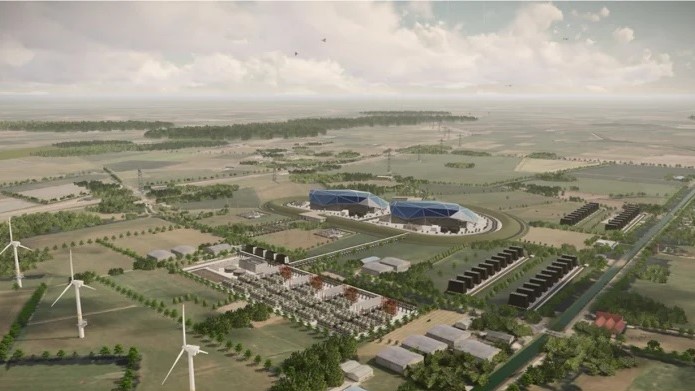Netherlands-based nuclear energy development company ULC-Energy says a recent study has shown the cost effectiveness of hydrogen produced by a Rolls-Royce small modular reactor (SMR) combined with high temperature Solid Oxide Electrolyser Cell (SOEC) technology produced by Denmark-based Topsoe. The study involved Topsoe, Rolls-Royce SMR and Dutch energy market consultancy, KYOS.
In August 2022, Rolls-Royce SMR signed an exclusive agreement with ULC-Energy to collaborate on deployment of Rolls-Royce SMR NPPs in the Netherlands. In November 2023, ULC-Energy, Topsoe and Rolls-Royce SMR signed an agreement to jointly investigate the production of hydrogen using Topsoe’s SOEC technology with power and heat produced by a Rolls-Royce SMR NPP. The study has revealed that the SMR-SOEC combination had a number of advantages:
A Rolls-Royce SMR power plant can operate 24/7, with 95% availability; SOEC electrolysis can produce more hydrogen per total power input when compared with conventional electrolyser technologies; Steam can be supplied directly from the NPP heat exchangers; and H2 production can take place off-grid.
Hydrogen can be produced by the SMR-SOEC combination for less than €3.5/kg ($3.8/kg). This cost could be reduced to less than €2.00/kg by 2050 by taking into account the value of the flexibility of curtailing hydrogen production and delivering electricity to an increasingly intermittent grid. The study demonstrated that system would produce the highest annual quantity of Hydrogen as a result of higher process efficiency and a high availability.
Topsoe’s SOEC technology has been under development for over 15 years and in 2023 ground was broken at its 500 MW SOEC manufacturing facility.
Tags: Hydrogen, KYOS, Rolls-Royace, SOEC



Recent Posts
DNV Grants Approval in Principle for New Ammonia Bunkering Vessel Design
Proteus Launches Modular Hydrogen Fuel Cell System for Maritime Sector
Van Oord Unveils Boreas, World’s Largest and Most Sustainable Offshore Wind Installation Vessel
New methanol-fuelled vessel ‘Berlin Maersk’ to enter service
NMPA wins greentech global environment award
CMA CGM in negotiations with Indian shipyards for LNG-powered shipbuilding
L&T to Develop Green Hydrogen and Ammonia Projects in Kandla
Pan Ocean Orders Two Eco-Ready VLCCs from HD Hyundai Heavy Industries